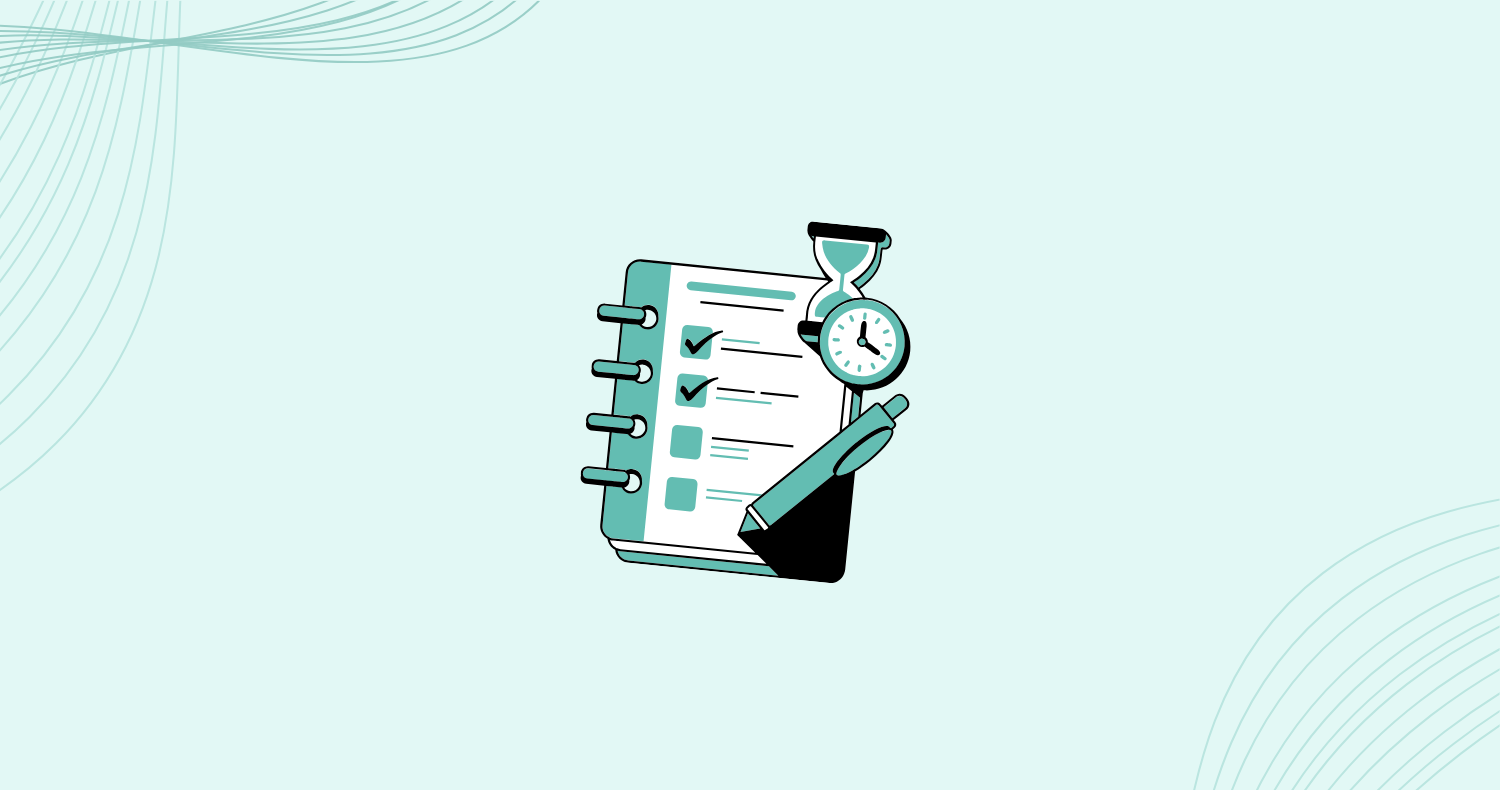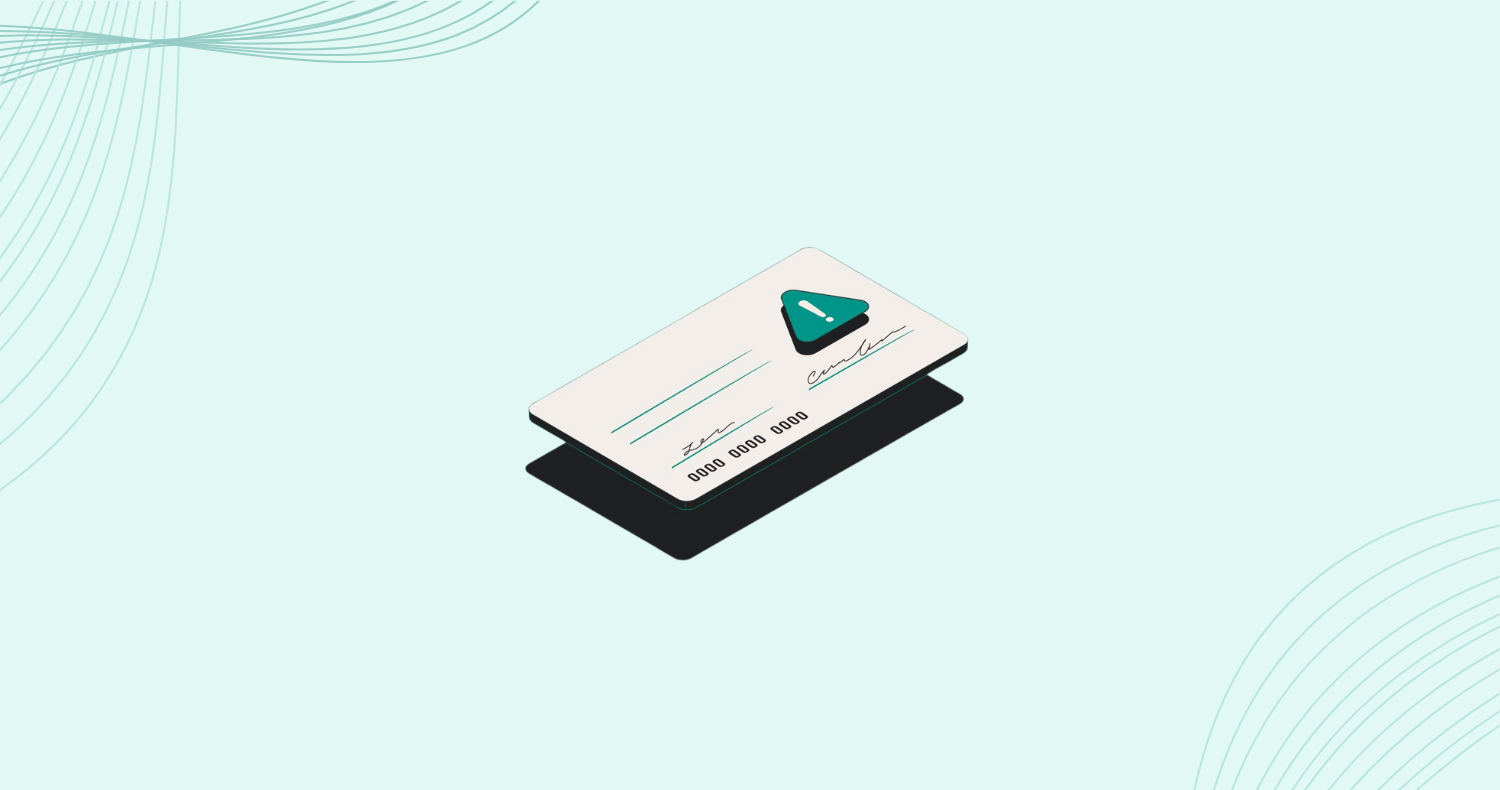How to Announce Payment System Changes to Clients Without Losing Trust
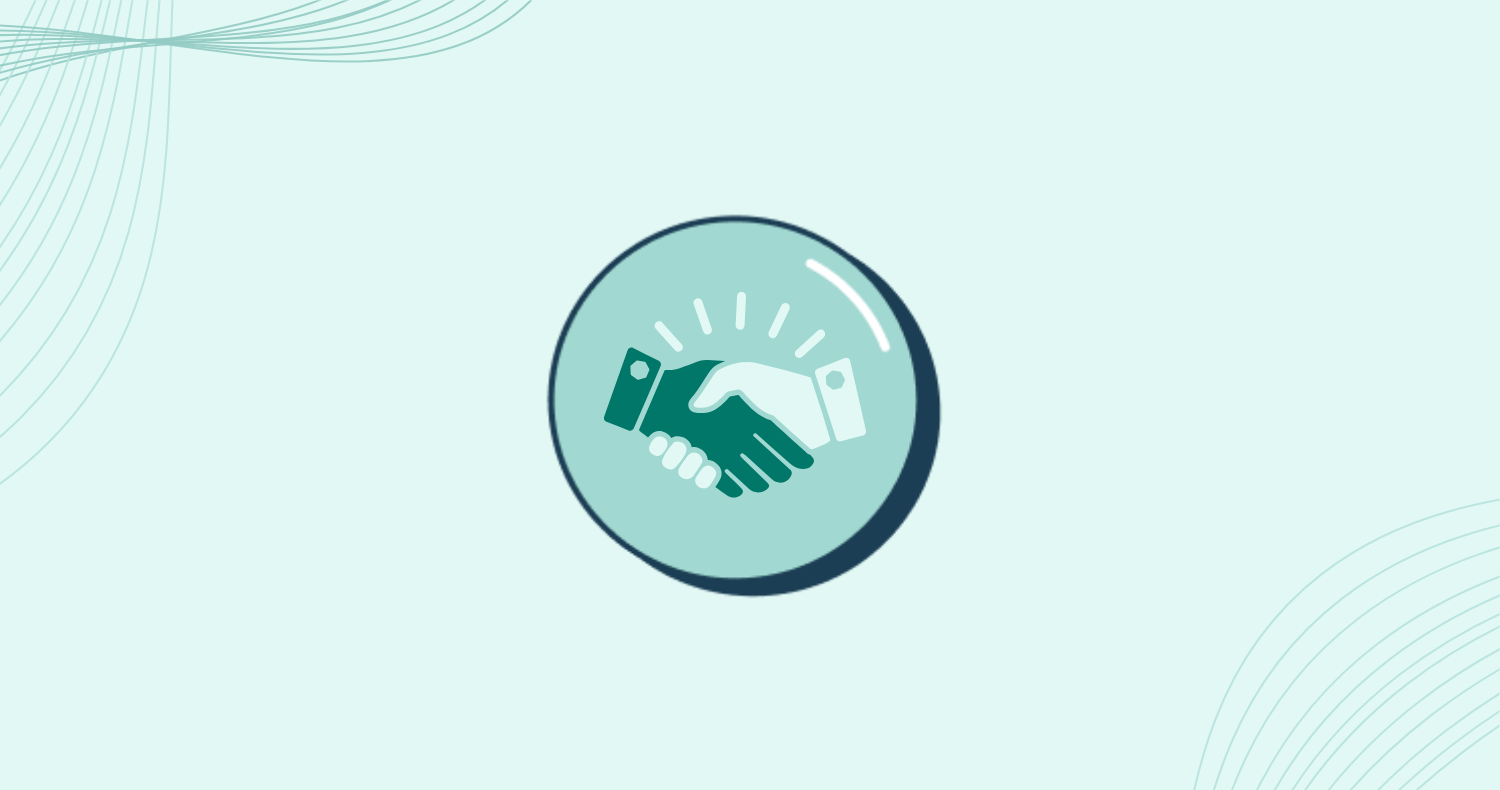
When you tell your clients you’re changing how they pay you, you’re touching the most sensitive parts of your relationship: money and trust. That’s why making the change isn’t as simple as implementing a new tool, it’s also about practically navigating the most fundamental shift in how your client interacts with you, month after month.
Ultimately, clients pay you because they trust you. When you change the payment system, even for legitimate reasons (like faster payments or better security), the reaction can vary from hesitation all the way to anger. But you’re not alone. In 2025, 72% of organizations are moving away from paper checks in favor of electronic payments, with most of them citing efficiency and security as the driving force.
For MSPs, the margin for error is thin: one miscommunication about fees or a poorly timed announcement can deeply damage client relationships.
That’s why clear and confident communication gives you control. Overall you want to make payment change feel like an upgrade, not a risk.
Follow the below tips to announce changes without risking client trust.
1. Get Internal Alignment Before You Announce Anything
You can’t lead clients through change if your team isn’t confident in themselves. That’s exactly why the first phase of rollout always has to happen internally.
This is the foundation and without it, any changes expected of clients cannot be done with confidence.
Key steps:
- Assign a Payment Migration Champion to own the messaging, client outreach plan, and adoption tracking.
- Bring together billing, operations, and account teams for a brief play-through: send a test invoice, walk through payment setup, confirm branded confirmation emails, and verify your PSA/accounting sync works without hiccups.
- Equip your team with a consistent script and FAQs: “Why are we making this change?”, “What happens to my current payment method?”, “What if I make a mistake?”
By doing this groundwork you’ll avoid the “We told the client to do X but our portal still shows Y” scenario that kills momentum. Clients won’t trust what you say until they see your team is aligned behind it.
It’s also smart to plan your internal scripts early. Anticipate the hesitation they may be feeling and make sure everyone has consistent, pre-approved responses. If one employee tells a client one thing and another gives a slightly different answer, you’ve instantly introduced uncertainty and uncertainty erodes trust fast. What might seem like a small miscommunication internally can feel like neglect from the client’s perspective. Suddenly, what should have been a smooth rollout turns into confusion, follow-up emails, and unnecessary customer service escalations.
While professionalism is always crucial, during a period of uncertainty (change), it is essential. When every employee delivers the same clear, accurate message, clients feel reassured that the change is intentional and well-managed instead of a last second shift.
2. Announce the Change as an Upgrade
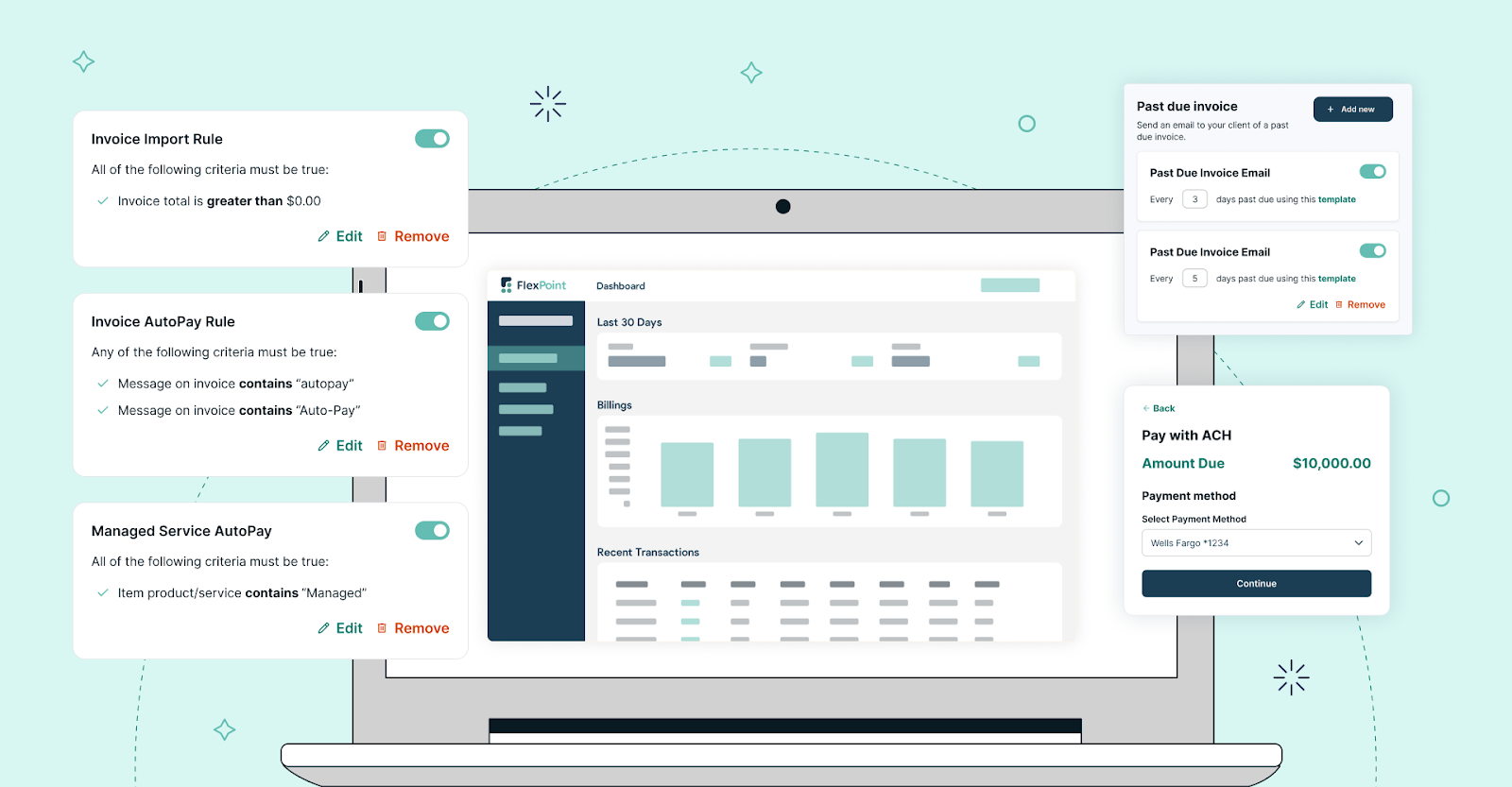
The words you use in your first announcement matter. You’re not “moving to a new payment system”, you’re upgrading how clients pay you. That shift in framing moves the client’s mindset from “we’re forcing change” to “we saw a need and are offering something better because of it.”
Frame it around what’s in it for them:
- Faster: Payments post the same day.
- Safer: No exposed bank details or risk of mail fraud.
- Simpler: One portal, one login, and instant confirmation.
Research backs this up: a large-scale study found that minor differences in phrasing (how something is introduced) significantly affect how people interpret and act on a message. When you frame the change as a benefit instead of a requirement, you’re automatically reducing resistance and increasing chances of early adoption.
When relevant, gather documentation from the new platform that you can send directly to them for their independent perusal.
This initial tone sets the stage for the rest of the rollout.
When you first announce, include:
- What’s changing and when
- Why it’s beneficial
- How to get started (a clear call to action — “Click here to set up your payment method”)
- Where to go for help
Avoid over-explaining the “why” in technical terms. Clients don’t care about NACHA standards or reconciliation automation, but what they do care about is getting a secure, fast, easy way to pay that doesn’t cause them extra work every month.
If you’re working with clients who are deeply attached to their current process, it’s worth getting a little more specific in how you communicate the change. Explain how the new platform improves security or helps them save money (for example, by paying through ACH instead of credit card). But keep it simple. Getting too technical can backfire, especially with clients who like to test limits or debate details. Ultimately, it comes down to trust. And your confidence in the change helps build theirs.
A short, benefit-led announcement email followed by a reminder or two across different channels (portal messages, invoice footers, and account manager calls) works far better than one long explanation.
Offering an incentive can also be effective when proving that the change is an upgrade.
3. Anticipate Questions Before They Arise
A client hearing about a billing change for the first time is likely to have questions and they will often be the same ones across the board. Luckily, that makes it easy to get ahead of them! Front-loading answering questions will result in increased confidence on their part because it means you’ve already considered things they’d be worried about and lessens repetitive support work.
Include a short, client-friendly FAQ (either linked or attached) that answers:
- “Is this new system secure?”
- “Can I still pay by check temporarily?”
- “Will my account or invoice history carry over?”
- “How long will payments take to process?”
Keep the tone reassuring and clear. Don’t include jargon or acronyms. And, when possible, emphasize what won’t change: your relationship, how much services cost, their account, and their billing frequency. If you can reassure them that what is most critical will remain the same, they will have less fear about the process overall.
You can borrow directly from the FAQ in the Moving Away from Checks Toolkit, which already covers the biggest objections your clients are likely to have.
4. Reinforce the Message (Because Once Is Never Enough)
Make sure you have multiple rounds of announcements because one is never enough. Even if you’ve written the perfect email, most clients won’t act after a single nudge, not because they don’t care, but because people are busy and payment habits are deeply ingrained. The goal should be avoiding flooding inboxes while remaining consistent for long enough for the new expectation to feel normal.
Think of your communication as a rhythm. Plan a three-touch cadence that feels natural and coordinated:
- Initial announcement: Frame the change as an upgrade (faster, safer, easier). Make it clear, positive, and benefit-led.
- Reminder: Highlight early adopters or share a success metric (“Most clients have already switched to digital payments, thank you!”). This normalizes the behavior, offering models for your clients to follow, and keeps the message fresh.
- Final notice: Be direct about next steps. At this point, mention when paper checks will be completely phased out or when a handling fee begins (e.g. $25 per check sent after the cut off date). You shouldn’t be persuading anyone at this point, but reinforcing what you’ve already said.
If you’re not sure how long to make this change in payment process, we have already built a 90-day rollout plan in our toolkit!
And don’t limit your reminders to email. Clients interact with your business in multiple places, so your message should show up there too:
- Add a short note in your invoice footer (“Pay online with our secure portal, it’s faster and preferred”).
- Post a brief message or banner in your client portal with a setup link.
- Have account managers reinforce it in regular touch points.
- Share internal updates to celebrate progress (“We’re now 80% paperless!”).
This approach keeps everyone (clients and team members) moving in sync.
Repetition doesn’t make you pushy; it makes you predictable. Predictability builds confidence, and ultimately confidence builds trust. When clients see the same message, tone, and steps across every channel, they stop wondering if the change is optional and start understanding that it’s simply the new and better standard.
Near the end of the roll out, it would be appropriate to take a more authoritative tone. By this point, you’ve communicated clearly, offered support, and given clients every opportunity to transition smoothly. At the end, the goal is follow-through.
Your messaging should shift from encouragement (“here’s why this change benefits you”) to expectation (“starting [date], all payments will be processed through our secure digital portal”). This isn’t about demonstrating that your MSP runs on clear and reliable processes.
Clients respect structure, especially when it’s tied to accountability. When you communicate firm timelines with confidence and fairness, it reinforces that your standards protect both sides.
5. Keep It Personal
Even with the new automations doing most of the heavy lifting process-wise, this is still a relationship change. And relationships thrive on personal connection. Payment systems might be technical, but what you’re really changing is a client habit built on trust.
Your top accounts deserve direct outreach. A quick, genuine call from their account manager can accomplish far more than three automated reminders combined. These touch points give you a chance to check in, answer lingering questions, and make clients feel truly seen.
A simple conversation can defuse hesitation (“We’re just making sure everything is easier for you”) or uncover hidden barriers. Taking the time to personally guide key clients through the transition will ultimately strengthen loyalty. It reminds them that, at the heart of all this automation, your MSP is still built on human connection.
During those conversations, use empathy and specificity:
“We’re modernizing how payments are handled to make it easier for both sides. It’s faster, more secure, and gives you instant confirmation, no more lost checks or waiting on deposits.”
Ultimately the reasons why you are changing to a new platform or method will be exactly the same reasons that convince your top clients to get on board with you. You’re not just moving money differently, you’re actually improving their client experience. Framing the change in terms of their benefit (“less admin time,” “fewer delays,” “peace of mind”) keeps the tone collaborative, instead of merely transactional.
Personal outreach also helps you identify potential blockers (like legacy payment workflows or corporate policies) before they slow adoption.
Is Your Payment Platform Actually Adding Value?
If you're not confident that your new platform is actually making life better for you or your clients, you need to double check. Lack of confidence is felt quickly by clients.
Because platforms purpose-built for MSPs should replace manual work, reduce exposure, and make cash flow predictable for you and your clients. Below is a quick side-by-side view of how a modern payments platform (examples: Same-Day ACH + branded client portal + verification layers) stacks up against continuing to accept paper checks. Use this as a conversation starter with clients or your team since the visual makes the tradeoffs obvious at a glance.
Change Management Is Relationship Management
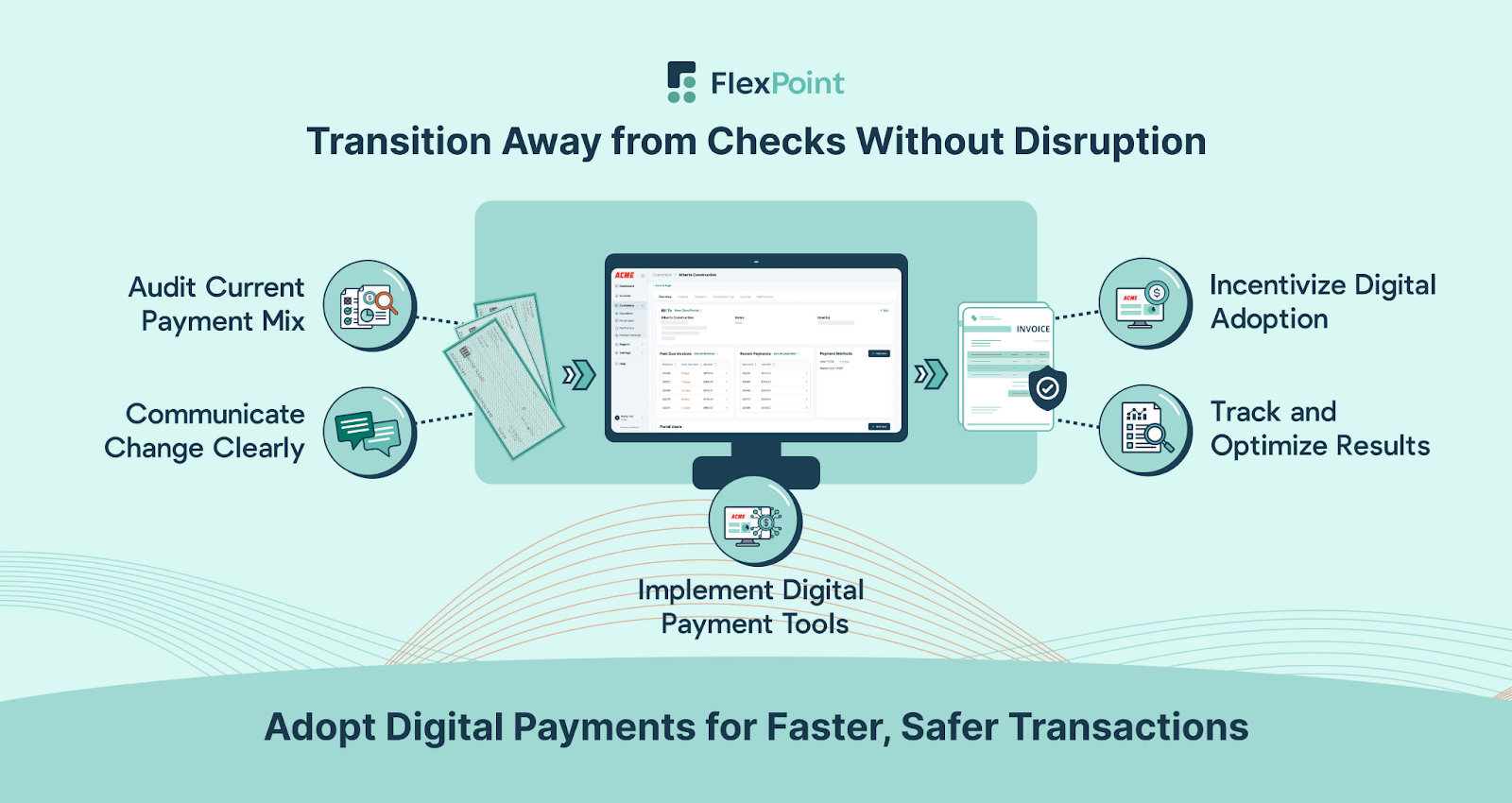
Modernizing your payment system is a test of trust. Every invoice you send and every payment a client makes is an ongoing moment of partnership. When you make that process smoother, faster, and safer, you’re demonstrating that you're a reliable partner.
Clients rarely leave because of a change itself; they leave because they feel blindsided or unheard. That’s why communication is everything. The way you roll out a new system says just as much about your MSP as the system you choose. But make sure you choose the right platform to begin with.
By aligning your team internally, positioning the change as an upgrade (not an inconvenience), and addressing questions before they become objections, you eliminate the uncertainty that fuels hesitation. Repetition across all communication channels (email, calls, invoices, and any portal) keeps the message steady and predictable.
And that’s the real win. You’re showing clients that your business adapts thoughtfully, communicates clearly, and always has their experience in mind. After the rollout, your client relationships should be stronger. If they're not, it's likely one of these steps was overlooked.
If you’re ready to make this transition smoother for your team and your clients, use the Moving Away from Checks Toolkit, it includes the full 90-day plan, ready-to-send client emails, and tracking templates that make adoption fast and painless.


